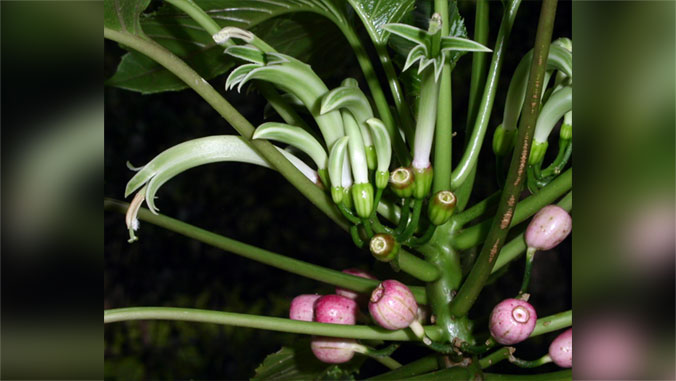
The introduction of invasive, non-native species to Hawaiʻi has made the islands one of the most altered ecosystems on the planet. A new study by researchers, including two from the University of Hawaiʻi at Mānoa, provides groundbreaking evidence about the influence of non-native birds on key seed dispersal networks.
Seed dispersal is the transport or movement of seeds. Plants rely on different vectors, such as wind or animals, to perform this function. It is critical to the regeneration of degraded ecosystems, plant population dynamics, community structure and biodiversity maintenance.
School of Life Sciences Professor Donald Drake, and PhD student Amy Hruska, were part of a team of experts who examined interaction networks at seven sites on Oʻahu. They discovered that seed dispersal networks are currently dominated by non-native birds, and those birds are interacting with and dispersing the seeds of non-native seeds more frequently than they are native seeds.
“Nearly all of the native birds that once dispersed seeds of forest plants have gone extinct as a result of direct or indirect effects of humans and the non-native species that humans have introduced to the islands,” Drake said. “At the same time, we have introduced non-native animals and plants from all over the world, and these species are now finding each other and building novel interaction networks.”
The findings were published in the Proceedings of the National Academy of Sciences.
This project highlights UH Mānoa’s goal of Excellence in Research: Advancing the Research and Creative Work Enterprise (PDF), one of four goals identified in the 2015–25 Strategic Plan (PDF), updated in December 2020.
Study implications
Drake said the findings indicate that native plants must now rely on non-native birds for seed dispersal and added that, unfortunately, these same non-native birds also disperse the seeds of many problematic invasive plant species.
Future studies will dive into the ecological characteristics of individual species, according to Drake, because those findings will lead to a higher accuracy of predicting the outcomes when they are placed together and begin to interact with each other.

